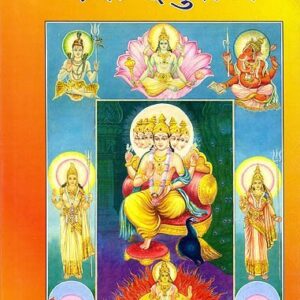Author: Sage Badaranayana (Traditionally accepted as Veda Vyasa by most scholars. However, some scholars have different view.)
About the author:
Sage Badarayana, also known as Vyasa, is a highly revered figure in Hindu philosophy and is traditionally credited with authoring the Brahma Sutras, also known as the Vedanta Sutras. These sutras form the foundational text of the Vedanta school of Hindu philosophy. Badarayana’s work has had a profound and lasting impact on the development of Hindu metaphysics and theology.
Life and Background
Historical Context:
- The exact dates of Sage Badarayana’s life are uncertain, with estimates ranging from the 3000 BCE to the 2nd century CE. He is often identified with Vyasa, the legendary sage who compiled the Mahabharata and the Puranas. However, some scholars consider Badarayana and Vyasa to be separate individuals.
Name and Identity:
- The name “Badarayana” is derived from “Badari,” a reference to the Badari ashram (hermitage) associated with him. The name “Vyasa” means “compiler” or “arranger,” reflecting his role in organizing and systematizing Vedic knowledge.
Major Contributions
Brahma Sutras (Vedanta Sutras):
- The Brahma Sutras are a collection of concise aphorisms that systematically outline the principles of Vedanta philosophy. They aim to harmonize and interpret the teachings of the Upanishads, providing a coherent framework for understanding the nature of reality, the self (Atman), and the ultimate principle (Brahman).
Structure of the Brahma Sutras:
- The Brahma Sutras are divided into four chapters (adhyayas), each containing four sections (padas):
- Samanvaya (Reconciliation): This chapter establishes the coherence and consistency of the Upanishadic teachings on Brahman.
- Avirodha (Non-Contradiction): This chapter addresses and refutes objections and contradictions to the Vedantic teachings.
- Sadhana (Practice): This chapter outlines the means of spiritual practice and realization of Brahman.
- Phala (Result): This chapter describes the fruits of realization and the nature of liberation (moksha).
Philosophical Teachings
Nature of Brahman:
- Badarayana’s Brahma Sutras emphasize that Brahman is the ultimate, unchanging reality underlying all existence. Brahman is both the material and efficient cause of the universe, transcending all dualities and distinctions.
Relationship between Atman and Brahman:
- The Brahma Sutras explore the relationship between the individual self (Atman) and the universal self (Brahman), asserting their essential oneness. Realizing this unity is the key to liberation from the cycle of birth and rebirth (samsara).
Means of Knowledge:
- The Brahma Sutras discuss various means of acquiring knowledge (pramanas), including perception (pratyaksha), inference (anumana), and scriptural testimony (shabda). They emphasize the importance of the Upanishads as a source of knowledge about Brahman.
Influence and Legacy
Impact on Vedanta Philosophy:
- Badarayana’s Brahma Sutras serve as the foundational text for all major schools of Vedanta, including Advaita (non-dualism), Vishishtadvaita (qualified non-dualism), and Dvaita (dualism). Each school interprets the sutras according to its own philosophical perspectives.
Commentaries and Interpretations:
- Numerous commentaries on the Brahma Sutras have been written by prominent philosophers, including Adi Shankaracharya, Ramanuja, Madhvacharya, and others. These commentaries provide diverse interpretations and have shaped the development of Vedantic thought.
Cultural and Religious Influence:
- The teachings of the Brahma Sutras have deeply influenced Hindu theology, metaphysics, and spiritual practice. They continue to be studied, recited, and revered in various religious and philosophical traditions within Hinduism.
Conclusion
Sage Badarayana, through his composition of the Brahma Sutras, has made an indelible mark on the landscape of Hindu philosophy. His systematic presentation of Vedantic teachings provides a profound and coherent framework for understanding the nature of reality, the self, and the ultimate principle. The Brahma Sutras continue to inspire and guide spiritual seekers and scholars, reflecting the timeless wisdom of Vedanta and the enduring legacy of Sage Badarayana.






